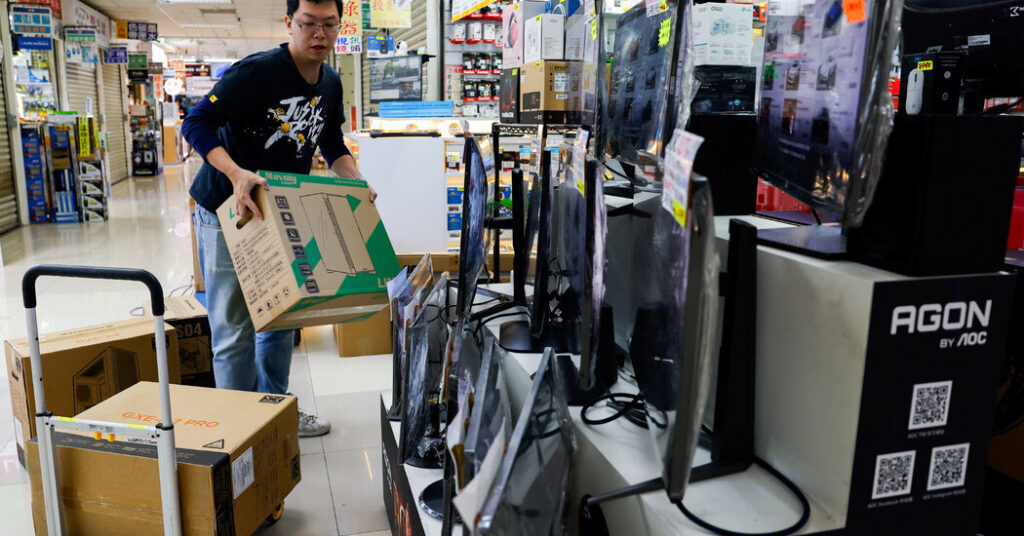Laptop computers from Taiwan, wine from Italy, frozen shrimp from India, Nike sneakers from Vietnam and Irish butter.
These products are found in homes across the United States, a testament to America’s enduring role as a champion of free trade and its standing as the most lucrative market for goods from around the world.
They are now among the vast categories of goods subject to additional taxes after President Trump, on Wednesday, imposed universal tariffs on all U.S. trade partners as well as additional, heavier duties on 60 countries he deemed the “worst offenders” of unfair trade practices.
In a sharp shift away from decades of trade policy, Mr. Trump instituted a 10 percent base line duty on all goods imported into the United States. In addition, other nations will be charged a so-called reciprocal tariff at an even higher rate next week.
For the European Union and China, the two largest U.S. trading partners, the White House imposed tariffs of 20 percent and 34 percent. The additional levy on China will be added to a 20 percent tariff previously imposed by Mr. Trump.
Even close allies such as Japan and South Korea were not spared. Neither were countries like Australia and Brazil that buy more from America than they sell to it.
The announcement, which Mr. Trump had hailed as America’s “Liberation Day,” sent shock waves across the world and raised the specter of a global trade war. Stock markets tumbled on the news, as investors were surprised at the size and scope of the tariffs.
In less than three months, Mr. Trump has pronounced tariffs on Canada, Mexico and China along with import duties on steel, aluminum, cars and car parts. The executive order on Wednesday included exemptions for semiconductors, pharmaceuticals and lumber. But analysts think those are not reprieves; they are products next to be targeted.
…And so on for other companions as well.

